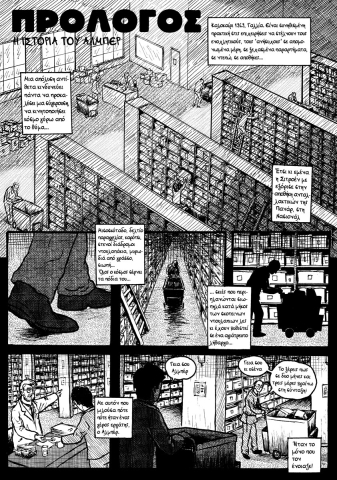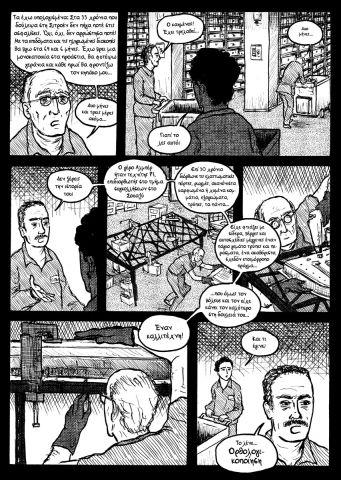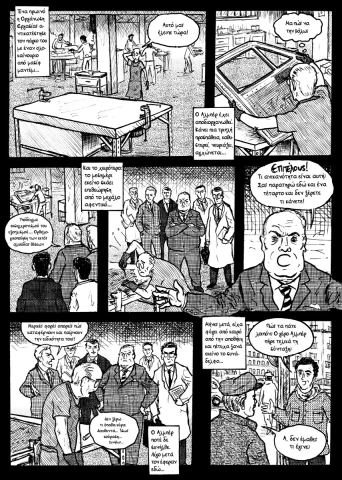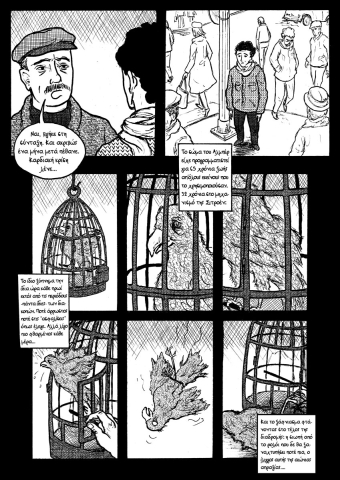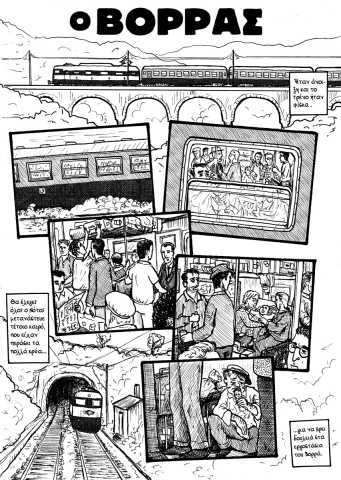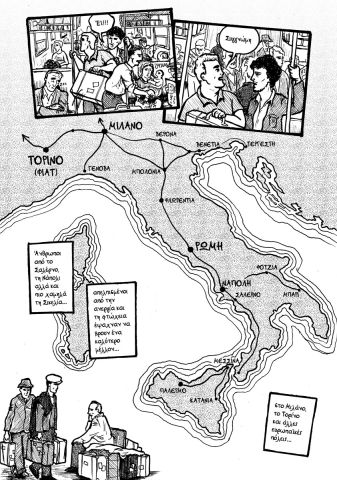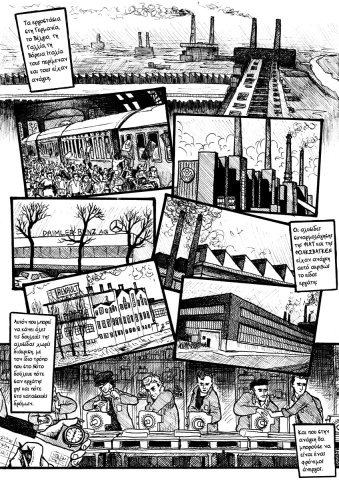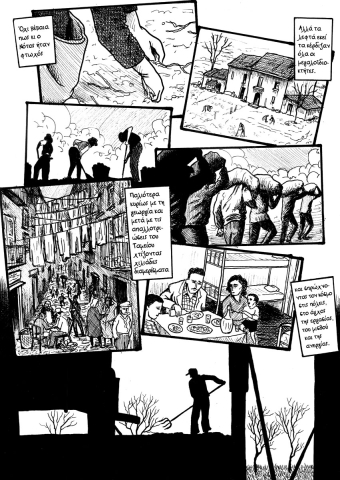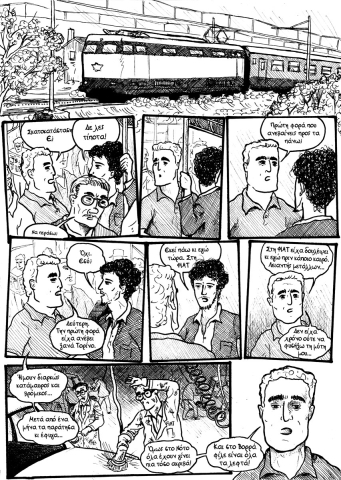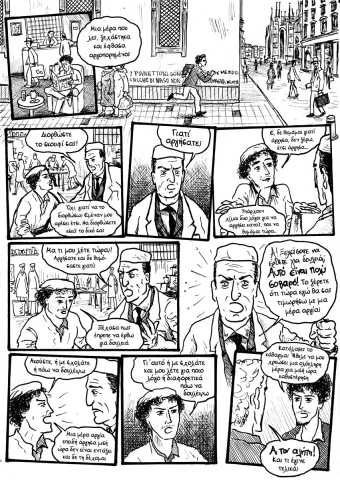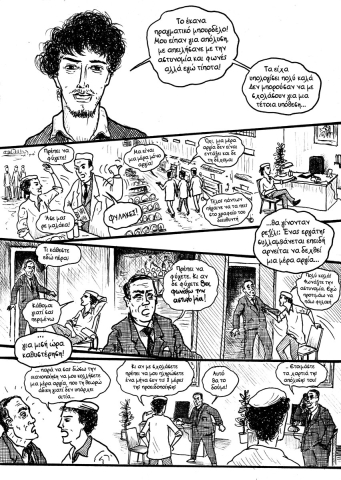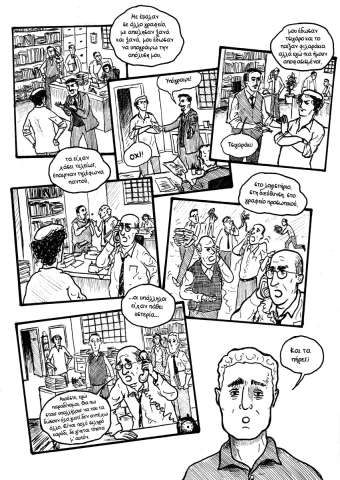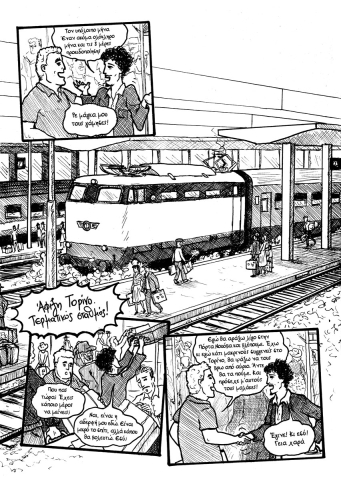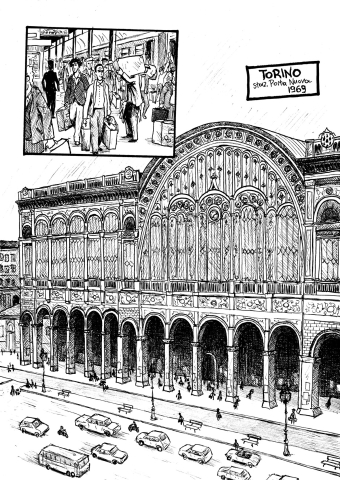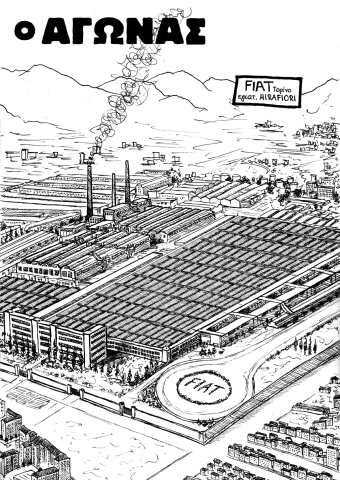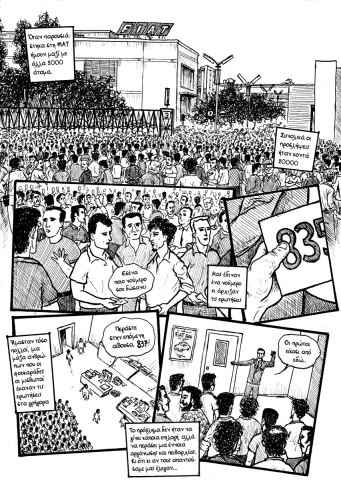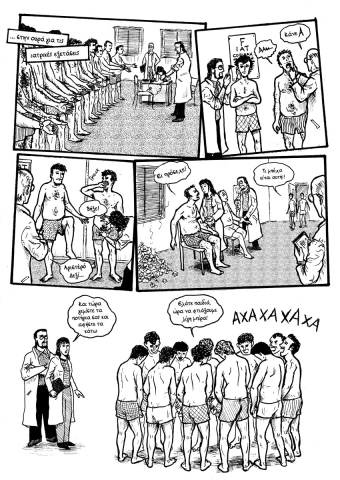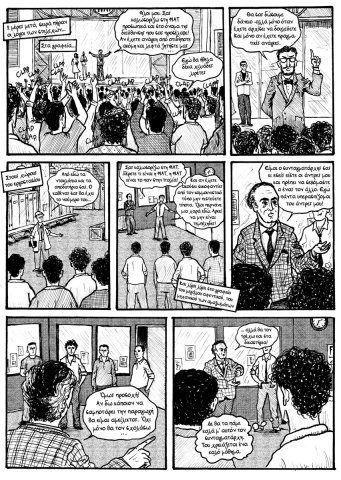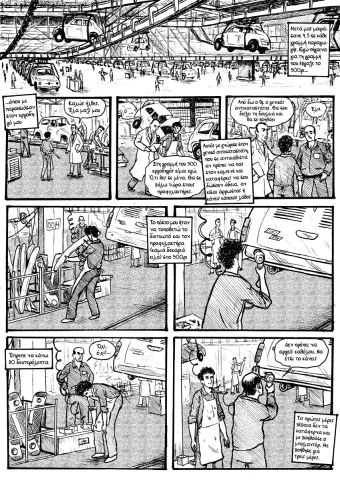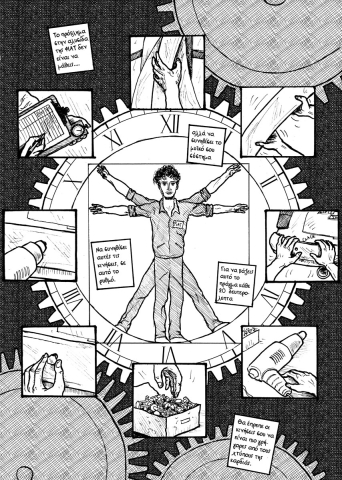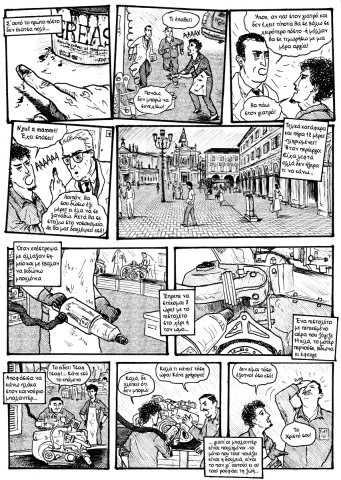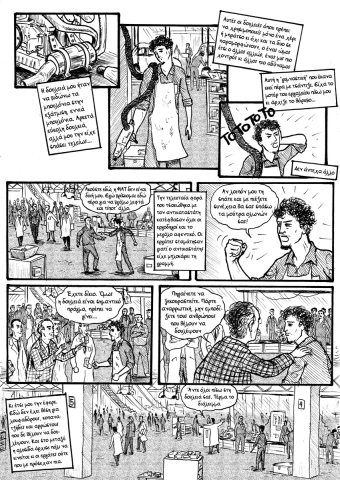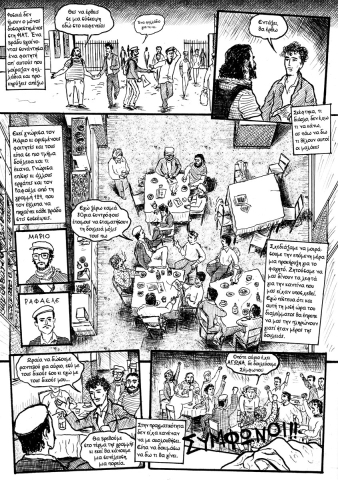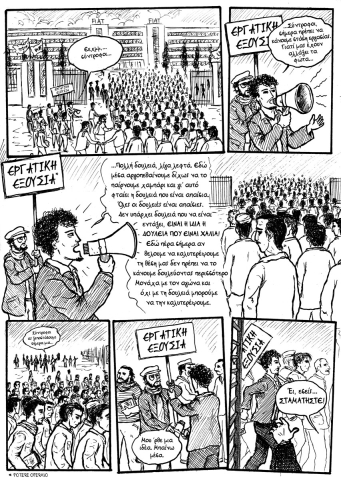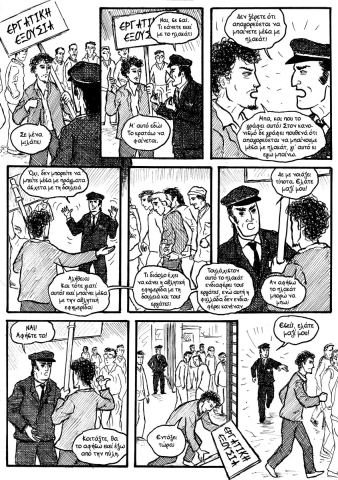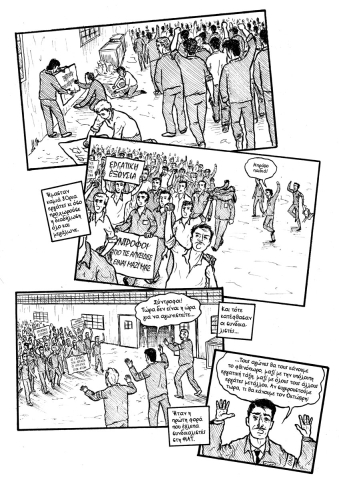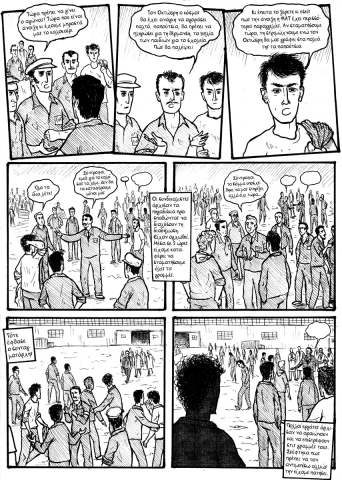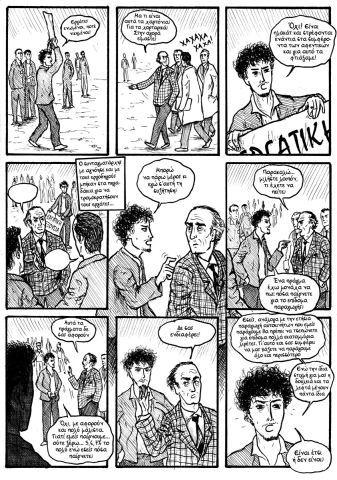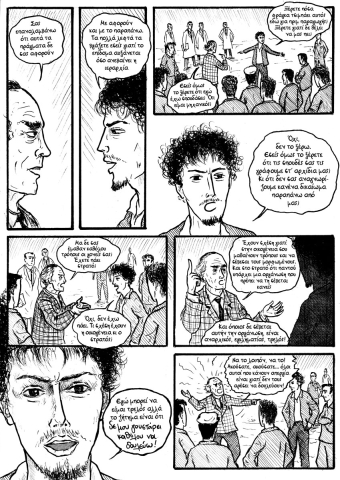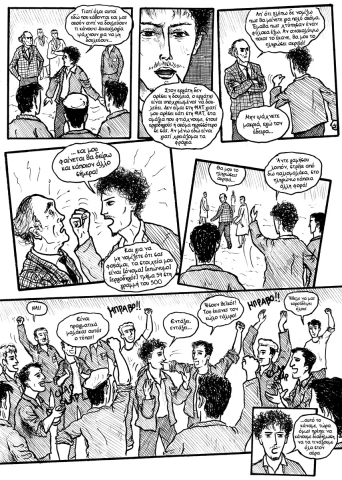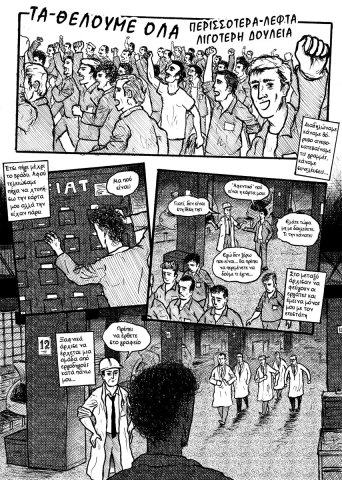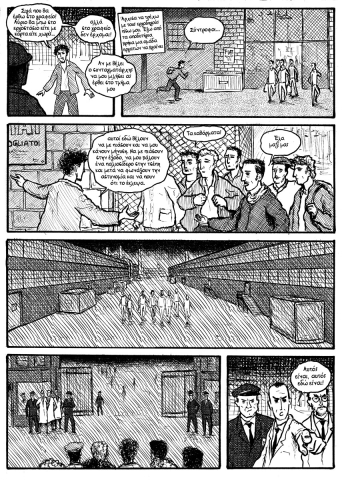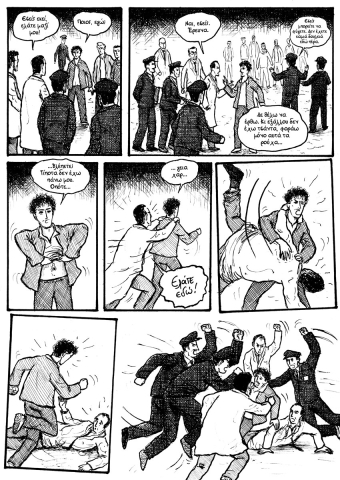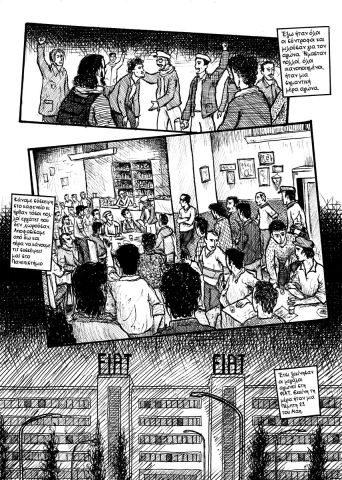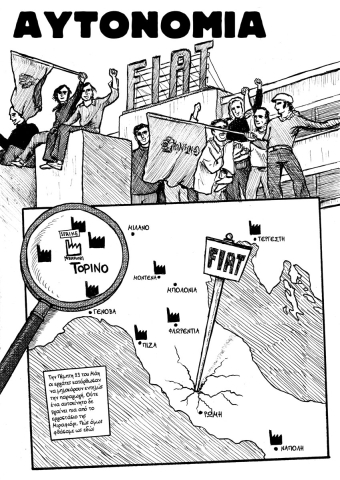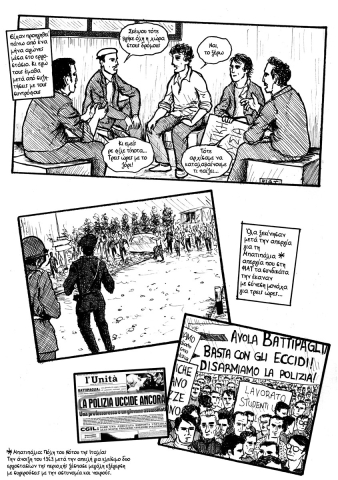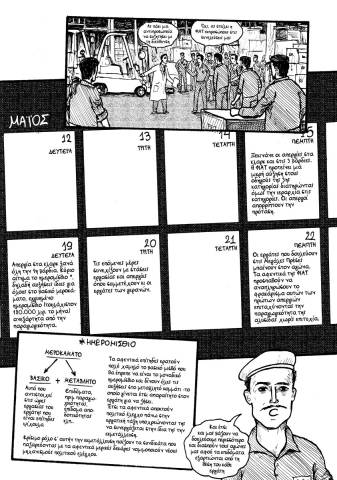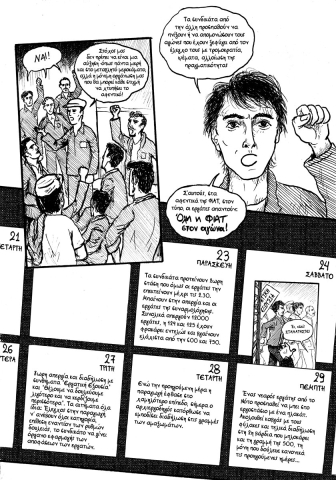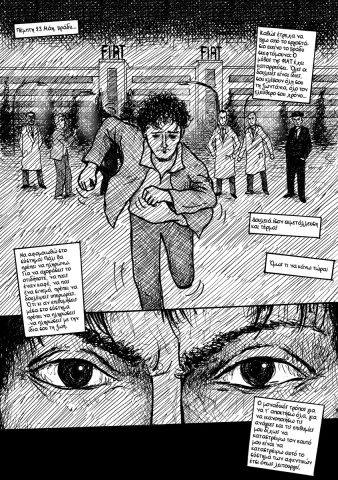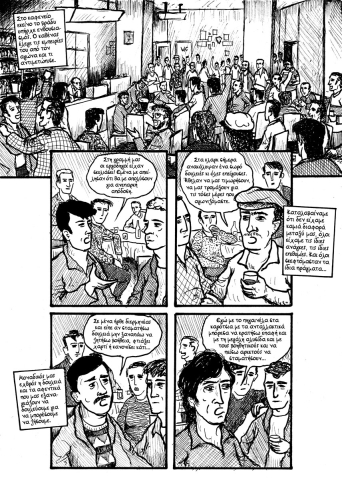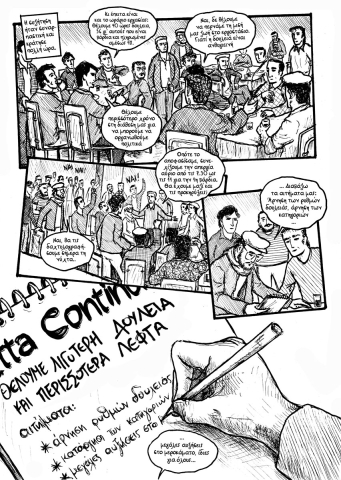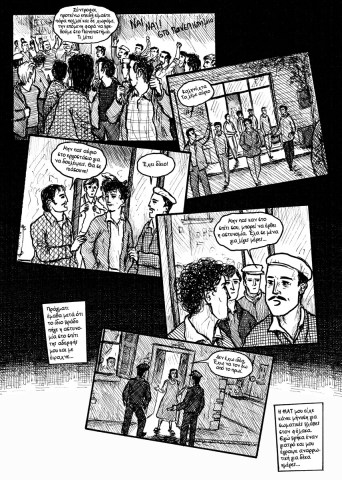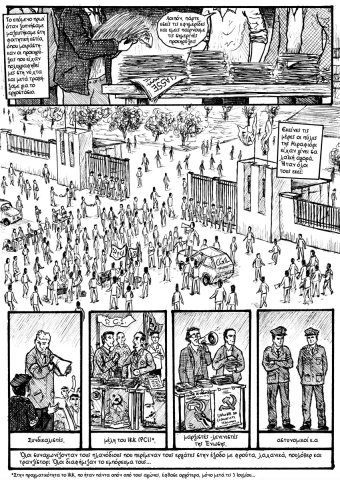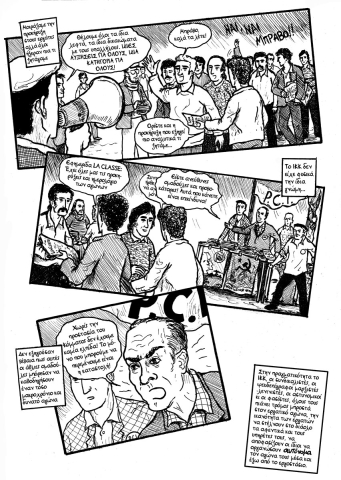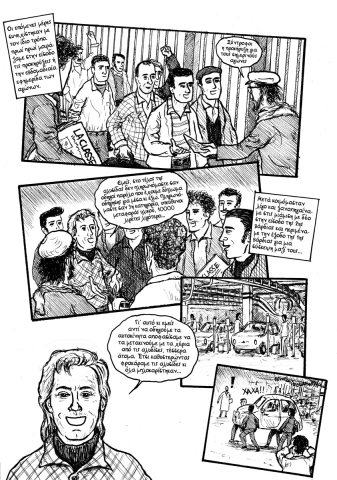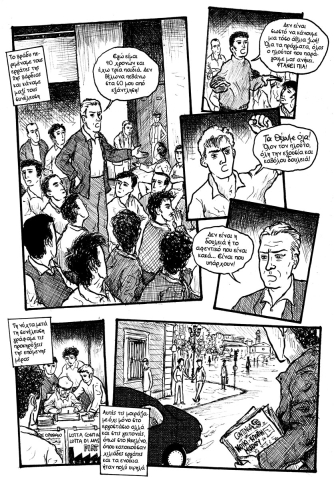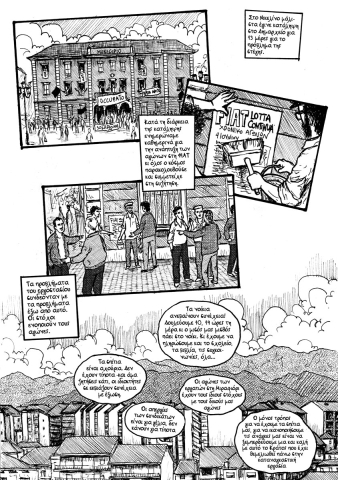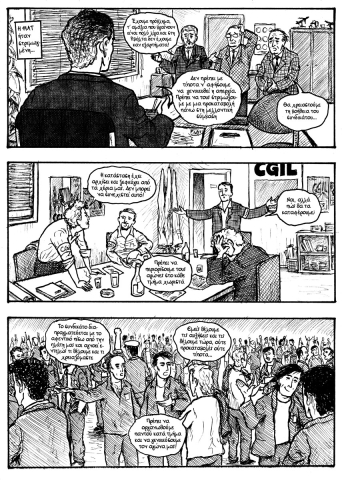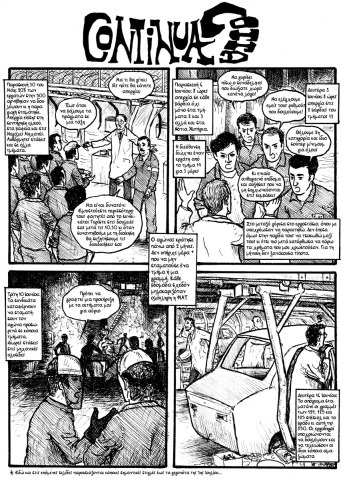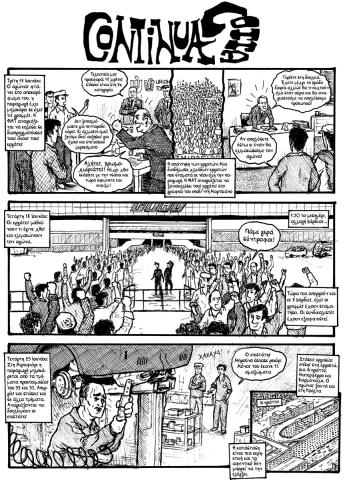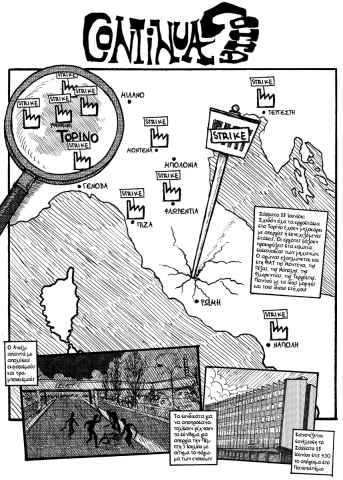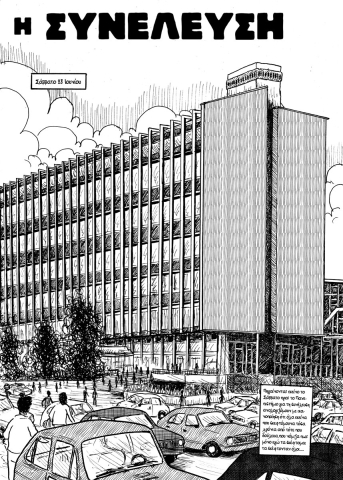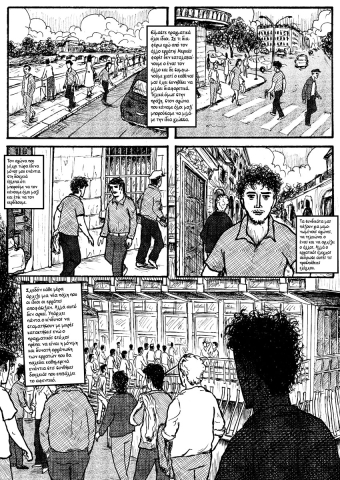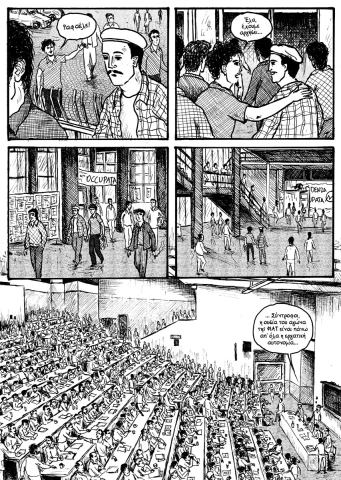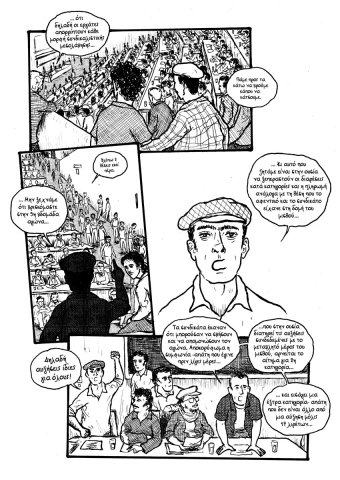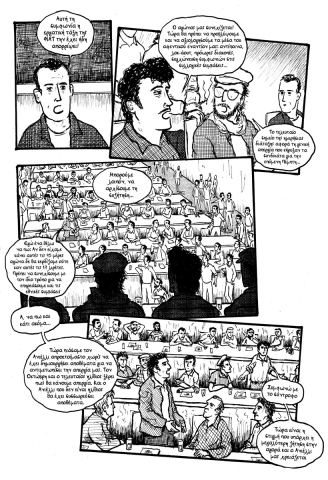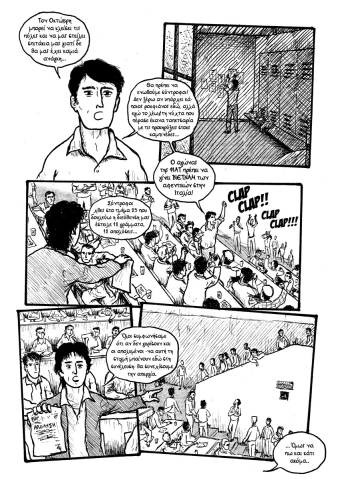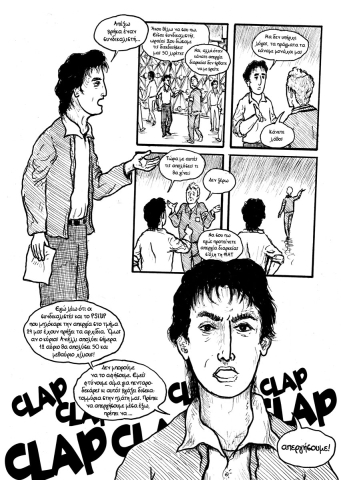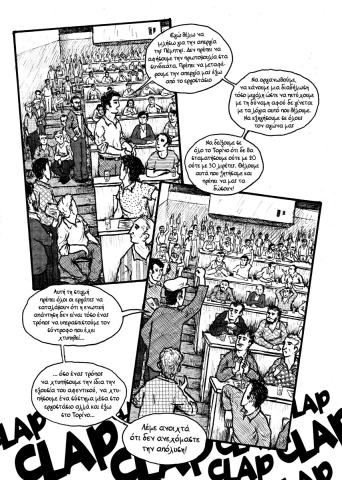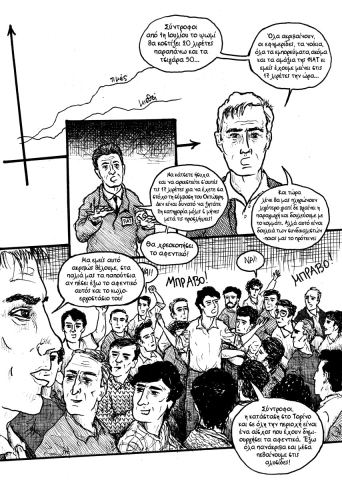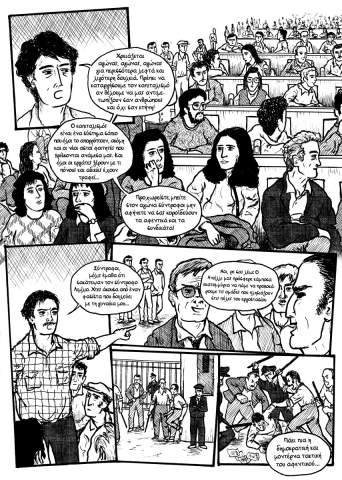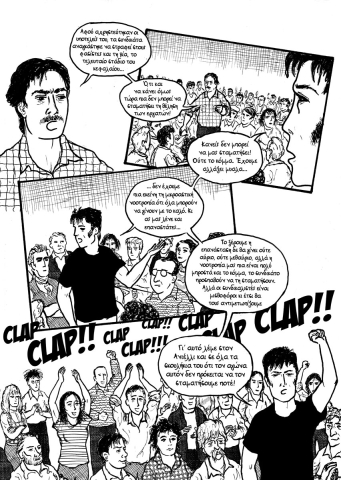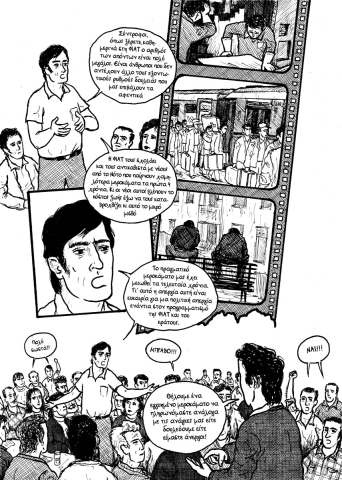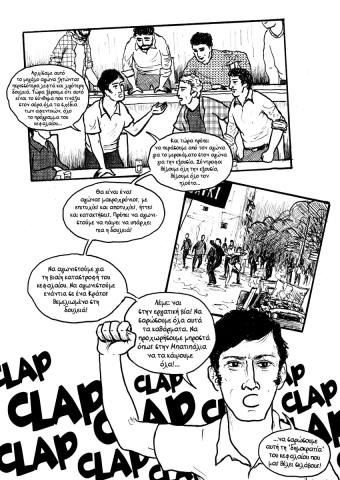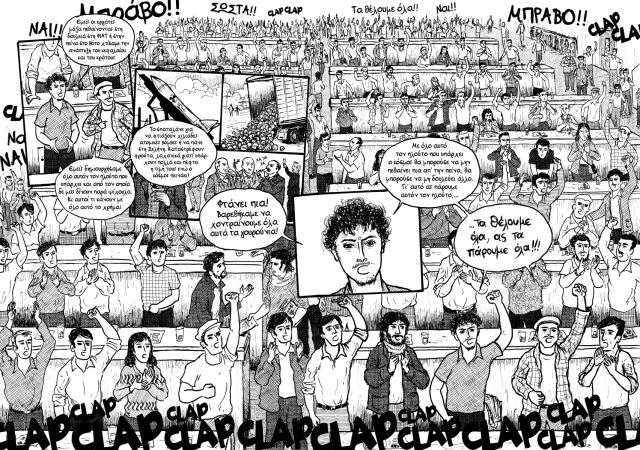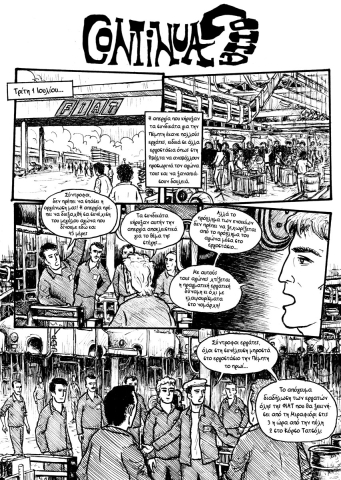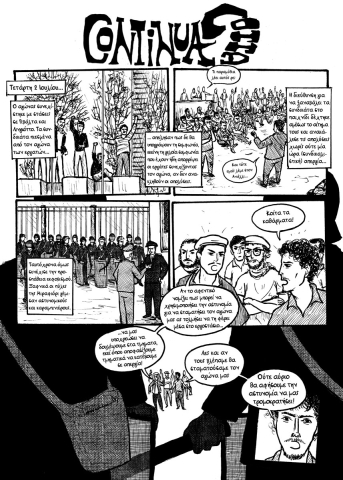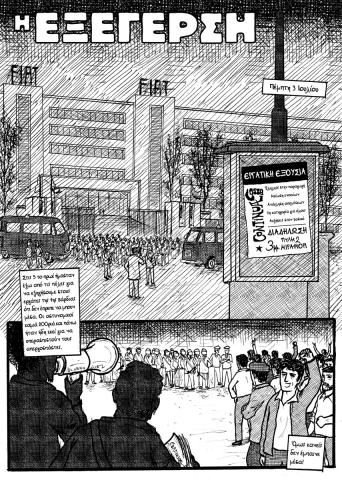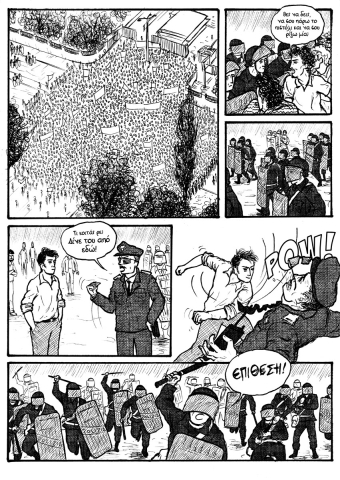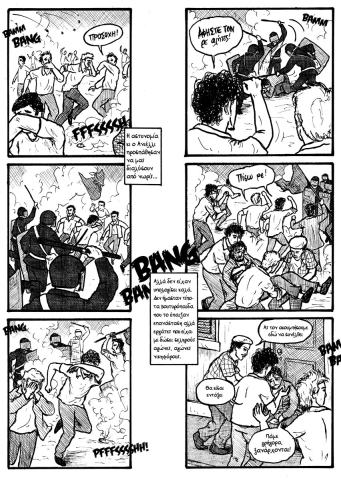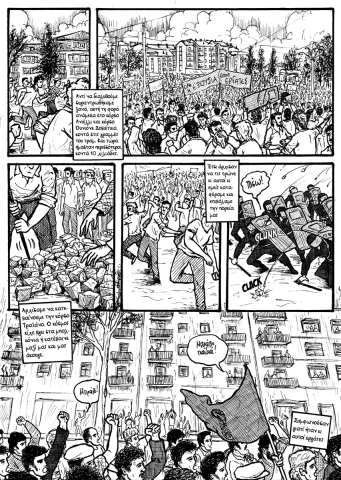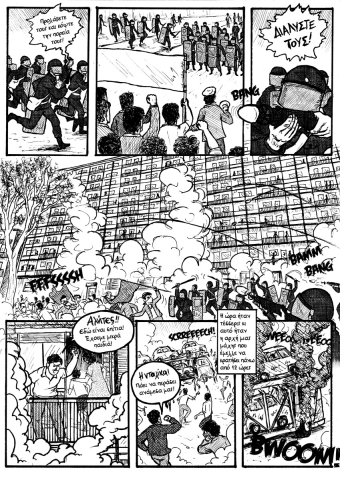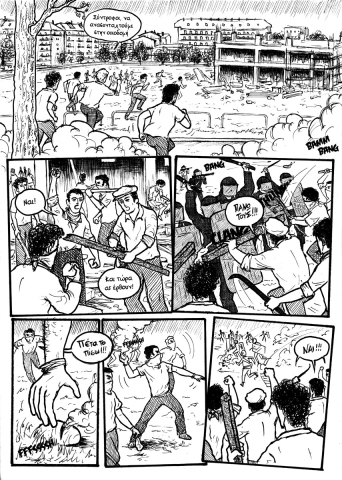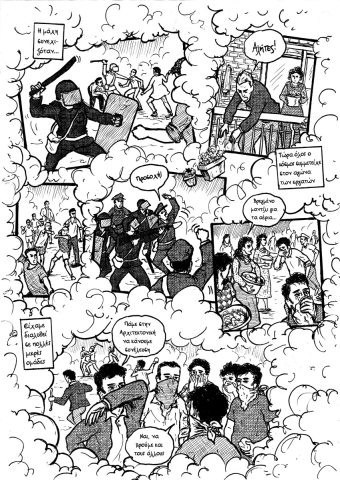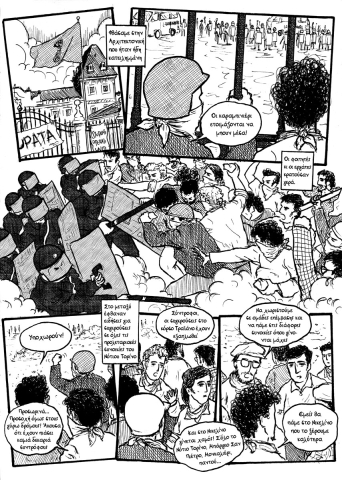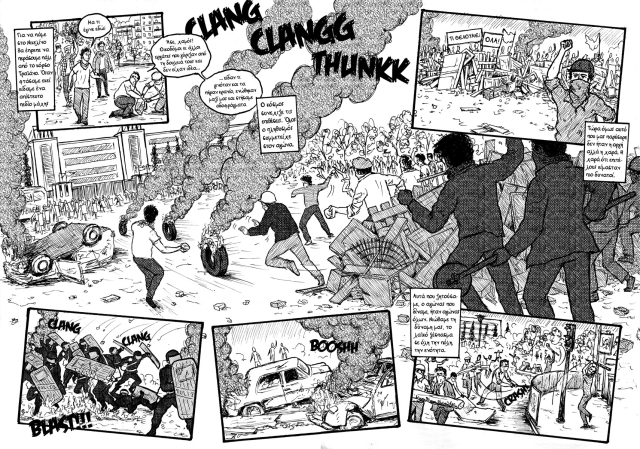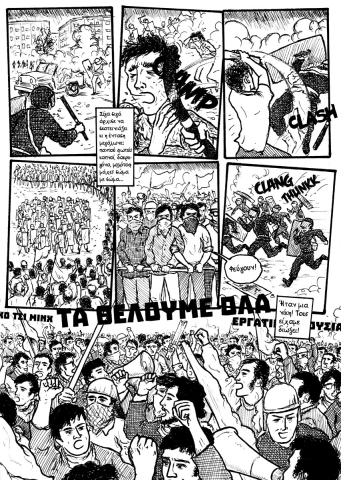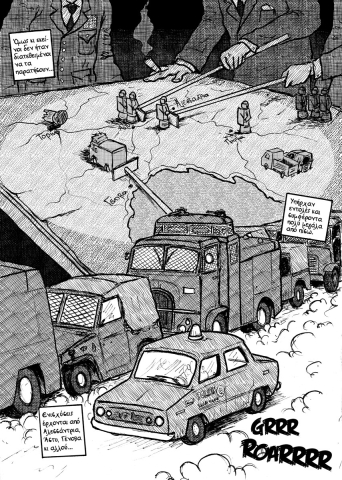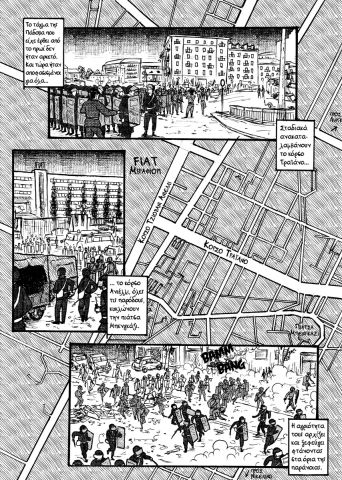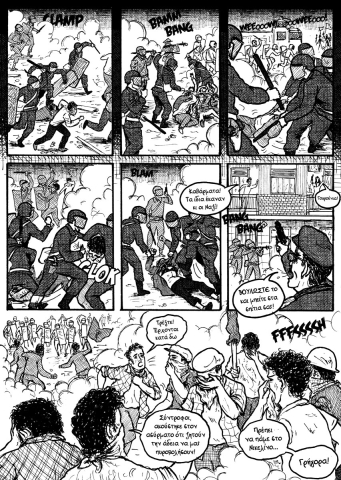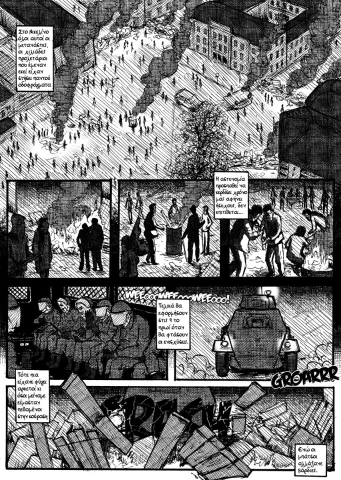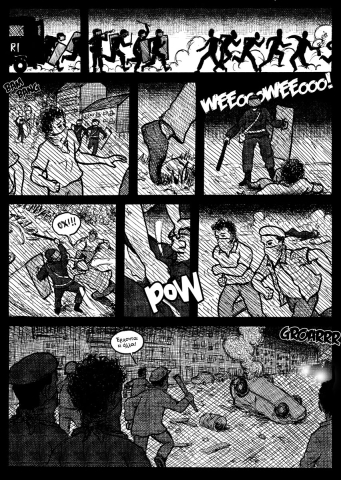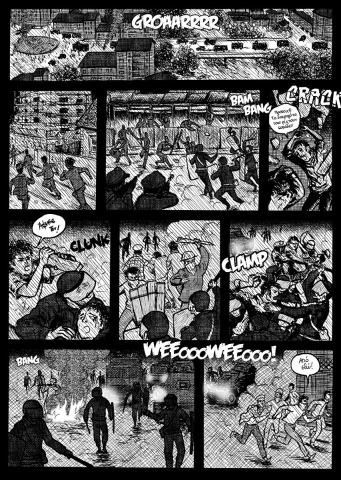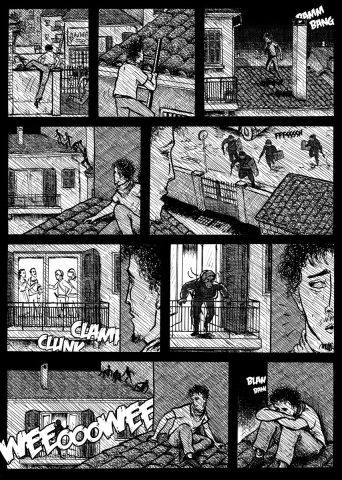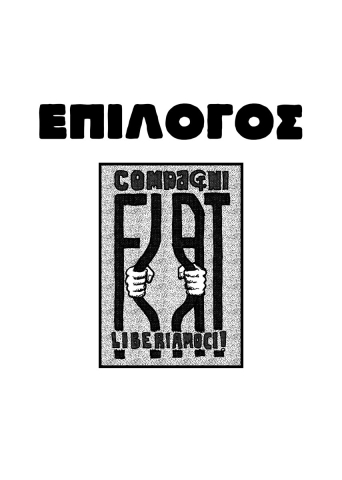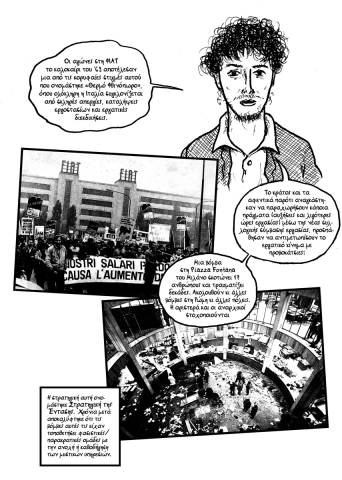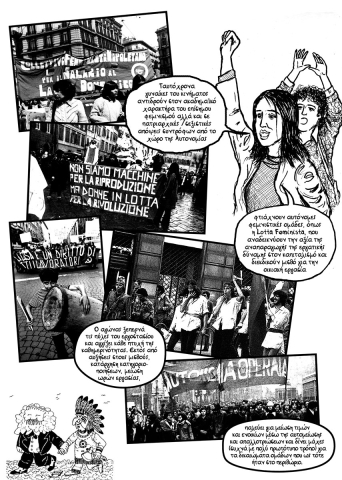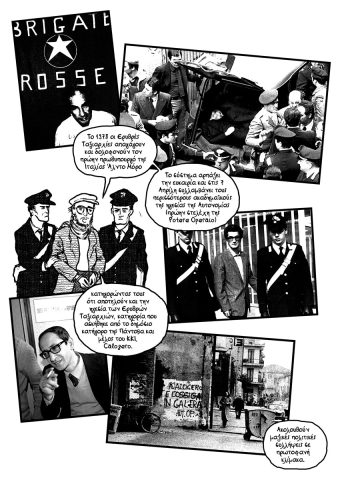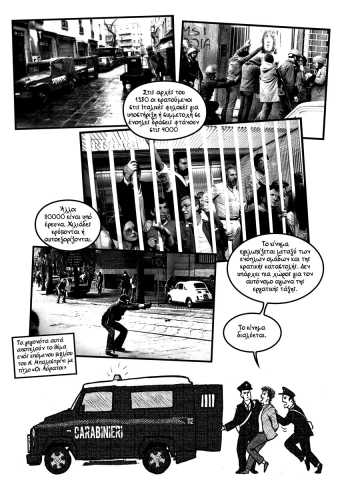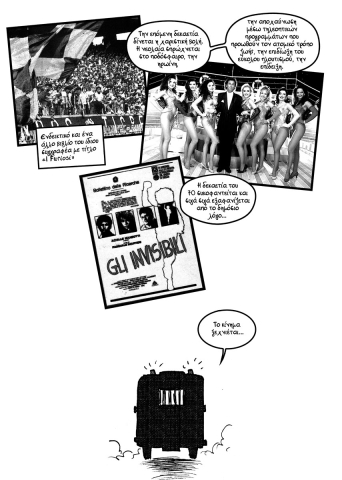We want Everything“, it’s a comic book based on the book of the same name by Nanni Balestrini, published in 1971 in Italy. The book deals with the young unskilled mass worker, the proletarian of the South (here of the southern Italy) who, with his mobility, immigration and work, supported the economic development of (northern) Italy (and of all of northern Europe) the second half of the 20th century.
At the same time, the book describes his reaction to exploitation and eventually his rebellion through the great strikes and struggles at Fiat in 1969 (the italian warm autumn). Struggles that marked the beginning of nearly a decade of labor and youth demands and struggles that were expressed in Italy largely through the Autonomy movement.
UPDATE: “We want everything” was published by the publications of colleagues on November of 2021
A short explanatory text for each part of the comic follows the gallery.
The Comic
We want everything -explanatory texts
Prologue: This short story comes from Linhart Robert’s book “L’ ETABLI”. Actually, it is the result of the combination of two separate stories of the book (relating to two separate individuals). As they describe in my opinion in a very vivid (but also brief) way the workers’ lives both inside and outside the factory, I decided to make this short story as a prologue to the comic We Want Everything.
It was this model of the obedient worker who’s never absent, does everything well, bends his head, stays speechless and helpless in front of work changes (rationalization) and awaits simply to come to retirement, that the young workers and students decided to overthrow in 1968 (and over the next decade) and is described in the main comic book: wild strikes, repetitive stopovers, sabotage, contempt of trade union leaders and all kinds of representatives, etc.
The North:“The North” is the first chapter of the comic “We want everything” based on the book of the same name by Nani Ballestrini. The comic does not follow the book literally: Here the first chapter does not correspond to the book’s homonymous chapter, but it is a summary of the chapters “South” and “North” and acts as an informal prologue for the rest of the comic book. The reason is that from the very beginning I had decided to focus more on the FIAT events.
As far as the implementation, a major problem I had from the very beginning was my ignorance of the basic things that are mentioned in the book and concern Italy in 1969.
For example, what clothes did they wear at that time? What hairstyles they had, what habits? Which train carried the thousands of domestic migrants from the Italian South, Sicily, Naples, Salerno to the Italian North? What was his course? How was his interior? How were the stations (and especially Porta Nuova in Turin) and so many others.
I researched and collected a lot of material, mainly through the Internet, but also from films such as The Invisible (based on the next book of Balestrini and the defeat of the Autonomy movement), Radio Alice or The Labor Class goes to Paradise. However, the risk of having made some mistakes remains.
The Struggle: In this chapter we watch the first days of the hero in FIAT, his fierce relationship with the hierarchy (foremen, managers and guards), the work in the chain and the first mobilization of the workers that led to a demonstration and strike (chapters FIAT and THE STRUGGLE in the book).
The main problem that I have encountered in this part must be my lack of knowledge of details of the “geography” of the Mirafiori plant, but also of the equipment and actual work in the chain during that period (1969). Perhaps some of the readers of the comic will feel that the hero’s reactions are not fully justified by his treatment by the FIAT hierarchy.
It is our huge distance from that period (temporal but mostly mental) and our igonarance about the actual working conditions in the chain of factories (the mental and physical fatigue of repetitive movements, the constant stress of time (and not “sinking” ending each piece at the next position of the chain), the pressure for procuctivity etc. It is a problem possibly that i will have during the whole comic -I’ve already thought of some solutions and I will try to see what fits best.
Autonomy: Beginning this chapter we briefly see the struggles and strikes all the previous days before that Thursday, 29 May (a day narrated in the previous chapter, THE STRUGGLE.) Then we find again our hero as he runs out of the factory and goes to the assembly in the cafe. What follows is a description of the situation in FIAT and the escalation of the struggles at the Mirafiori plant until the complete blockade of production (while spreading to almost all factories in Italy) just before the big assembly in the University and the events in the 3rd of July. (chapters THE WAGE, THE COMPANIONS and THE AUTONOMY in the book).
The main problem I encountered in this part is that much of the material in the book consists of a calendar format with records of each day’s events or actions inside the factory. Keeping what I judged as most important, I chose to maintain the format of the diary only for the beginning (before May 29) and to give a form of comic panels for after 29, trying to make an escalation.
For this chapter, I have also used some stuff of two other books, “L’ ETABLIE” by Linhart Robert, and “The Diary of a Renault Worker”, by Daniel Mothe.
The assembly: In this chapter, we see the assembly (assemblea) of FIAT workers and university students at the weekend and briefly the events before the big demonstration on July 3, 1969 (which will be presented in detail in the next chapter, The Rebellion).
This chapter is for the most part consisted of the points of view of the participants in the assembly. This means that the action scenes are minimal and in essence what we are mainly reading are the views behind the mobilizations of those times in FIAT (but also in universities, other factories, etc.) This was also my biggest problem – how to present in an interesting way a scenario consisting mainly of speeches and dialogue. I tried to become as inclusive as possible so as not to tire the reader but without depriving him of something that I may consider as important.
Rebellion: This chapter, as in the book, tracks the events in Turin on July 3 of ’69, in what became known as the Battle of Corso Traiano (la Rivolta di Corso Traiano). The demonstration organized by the workers in the previous chapter (assembly) turns into violent street fights with the police around the Mirafiori plant, especially in Corso Traiano, but also in other areas of Turin, such as Nicelino.
Unlike the previous chapter, here action is dominant. Because the narrative in the book is very dense, I have tried to draw the main points and build an escalation -sacrifing however (small) episodes and details that may seem important to some.
Another problem I encountered was the historical precision of details such as the buildings on the streets mentioned, the uniforms / cars / equipment of the carabinieri etc. Where I could not find appropriate photographs from the internet, I used material from the film Lavorare con lentezza (especially for some scenes in Nicelino), from google maps as well as more general pictures of barricades and street fights with policemen from May 68 and Italian Autonomy.
Epilogue: This epilogue tries to summarize what succeeded the events in the comic and resulted in the movement of Autonomia

